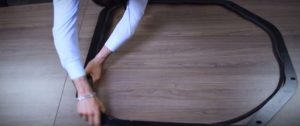Silicone hoses connect the intake pipes and tubes in diesel-powered vehicles and equipment. They’re molded from silicone rubber, an elastomer that withstands extreme temperatures and resists hardening and cracking. With silicone hoses, vehicle and equipment manufacturers can source coiled lengths and cut them to size. Manufacturers can also work with a custom fabricator who provides pre-cut lengths along with design assistance and guidance about product selection.
Types of Silicone Hoses
To choose the right silicone connectors, you’ll also need to understand the differences between them. Silicone hoses serve different functions than silicone reducers or silicone elbows, too.
- Straight silicone hoses come in various lengths and can be cut-to-size either in-house or by a custom fabricator. Straight hoses support the use of metal clamps and may contain fabric reinforcements.
- Hump hoses support slight intake adjustments and bends. They can also compensate for minor misalignments between metal pipes or tubes. Applications include air metering, throttle body assemblies, and inlets and outlets.
- Wrapped hoses provide enhanced pressure resistance. If you need a high-pressure hose, remember that burst pressure is four times the working pressure. If you need a silicone vacuum hose, you’ll need a reinforced hose instead.
Liners and Reinforcement Materials
For especially demanding applications, molded silicone couplers are available with different liners and reinforcement materials. Here are some common types.
- Fabric reinforcements typically use polyester or aramid in a four-ply construction for added strength and high-temperature resistance.
- Metal wire reinforcements help to protect silicone connectors from extreme pressures, including vacuum pressures that can cause silicone couplers to collapse.
- Liner materials impart specialized properties. For example, a fluorocarbon liner can enhance a silicone connector’s resistance to residues from petrochemicals.
Industry Standards and Approvals
Some applications for silicone connectors need to meet specific industry standards or approvals. Examples include:
- SAE J20 R1 or SAE J20 R1 H.T. Class A
- TMC RP303B Grade I and Grade II
- MIL-SPEC A-A-52426
Heavy-duty OEM requirements may also apply.
How to Cut Silicone Hoses
Manufacturers who order coils of silicone hose can cut them in-house, typically with a razor blade, to achieve the desired length. This may seem cost-effective until you consider your true costs. With skilled workers in short supply, there’s an opportunity cost with every labor operation. Plus, if you’re asking higher paid employees to cut lengths of rubber, you’re adding greater direct-labor costs to projects.
Material waste could be higher than you realize, too. Lengths of hose that are cut too short can end up in the trash. Lengths of hose that are cut too long may not fit readily and can require additional assembly time. By working with a custom fabricator like Elasto Proxy, however, you can source the right silicone connectors and get added value that saves you time and money.
To learn more, contact us.









